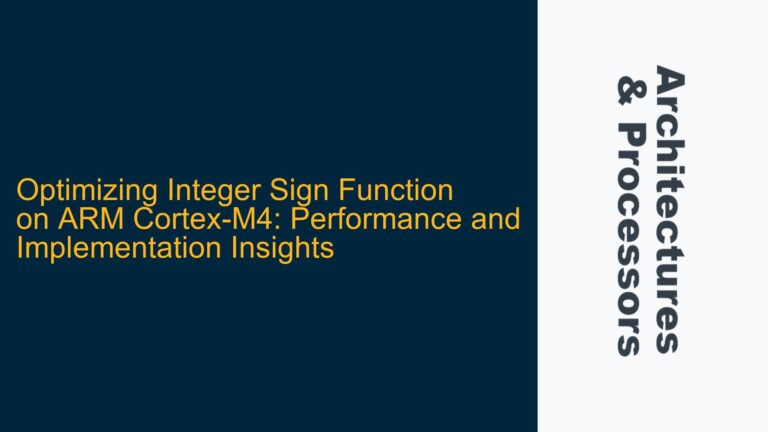Understanding the GDS2 Generation Flow for ARM IPs
The process of generating GDS2 (Graphic Data System II) files from ARM IP RTL (Register Transfer Level) involves a series of well-defined steps that transform high-level design descriptions into a physical layout ready for fabrication. ARM IPs such as the SSE-200 and Corstone-201 are complex subsystems that require meticulous handling to ensure the integrity and performance of the final design. The flow begins with the synthesizable Verilog RTL provided by ARM, which serves as the starting point for the entire process. This RTL must be synthesized, placed, and routed to produce a GDS2 file, which is the industry-standard format for representing the physical layout of an integrated circuit.
The first step in this flow is to ensure that the RTL is synthesizable and meets all the design constraints. This involves running the RTL through a synthesis tool such as Cadence Genus or Synopsys Design Compiler. The synthesis tool converts the RTL into a gate-level netlist, which is a representation of the design in terms of standard cells and macros. The netlist is then used as input for the place and route (P&R) process, where the physical layout of the design is created. The P&R process involves placing the standard cells and macros on the silicon die and routing the connections between them. This step is critical as it determines the physical arrangement of the design, which directly impacts performance, power, and area (PPA).
Once the P&R process is complete, the design undergoes a series of verification steps to ensure that it meets all the design rules and constraints. This includes design rule checking (DRC), layout versus schematic (LVS) checking, and timing analysis. DRC ensures that the physical layout adheres to the fabrication rules, while LVS verifies that the layout matches the original schematic. Timing analysis ensures that the design meets the required timing constraints. After these verification steps are successfully completed, the final GDS2 file is generated, which can be sent to the foundry for fabrication.
Challenges in ARM IP RTL to GDS2 Conversion
The conversion of ARM IP RTL to GDS2 is not without its challenges. One of the primary challenges is the complexity of the ARM IPs themselves. The SSE-200 and Corstone-201 are highly configurable subsystems that include multiple processing elements, memory controllers, and interconnect fabrics. This complexity can lead to issues during synthesis and P&R, particularly if the design constraints are not properly defined or if the RTL is not optimized for synthesis.
Another challenge is the integration of the ARM IP with other components in the SoC. The ARM IP must be seamlessly integrated with other IPs, such as custom logic, memory, and peripherals, to form a complete SoC. This integration can introduce additional complexity, particularly in terms of timing closure and signal integrity. Ensuring that the ARM IP interfaces correctly with other components and that the overall SoC meets its performance targets is a critical aspect of the GDS2 generation process.
Timing closure is another significant challenge in the RTL to GDS2 flow. The ARM IPs often operate at high frequencies, and meeting the timing constraints can be difficult, especially in advanced process nodes. The synthesis and P&R tools must be carefully tuned to achieve the required performance while minimizing power consumption and area. This often involves iterative optimization, where the design is repeatedly synthesized, placed, and routed until the timing constraints are met.
Power management is also a critical consideration in the GDS2 generation process. ARM IPs such as the SSE-200 and Corstone-201 include advanced power management features, such as multiple power domains and dynamic voltage and frequency scaling (DVFS). These features must be properly implemented in the physical layout to ensure that the design meets its power targets. This involves careful planning of the power distribution network (PDN) and the placement of power management units (PMUs) within the design.
Detailed Steps for Generating GDS2 from ARM IP RTL
The process of generating GDS2 from ARM IP RTL can be broken down into several detailed steps, each of which must be carefully executed to ensure a successful outcome. The first step is to prepare the RTL for synthesis. This involves ensuring that the RTL is clean and free of synthesis errors. The RTL must also be properly constrained, with timing, area, and power constraints defined in a synthesis constraints file. This file is used by the synthesis tool to guide the synthesis process and ensure that the resulting netlist meets the design requirements.
Once the RTL is prepared, the next step is to run synthesis. The synthesis tool reads the RTL and the constraints file and generates a gate-level netlist. This netlist is a representation of the design in terms of standard cells and macros. The synthesis tool also generates a set of timing reports that indicate whether the design meets the timing constraints. If the design does not meet the timing constraints, the RTL may need to be modified, or the constraints may need to be adjusted.
After synthesis, the next step is to run the place and route (P&R) process. The P&R tool reads the gate-level netlist and the physical constraints file, which defines the placement of the standard cells and macros on the silicon die. The P&R tool places the cells and macros and routes the connections between them. The P&R process is iterative, and the tool may need to be run multiple times to achieve the desired placement and routing. The P&R tool also generates a set of timing reports that indicate whether the design meets the timing constraints after placement and routing.
Once the P&R process is complete, the design undergoes a series of verification steps. The first verification step is design rule checking (DRC), which ensures that the physical layout adheres to the fabrication rules. The DRC tool reads the GDS2 file and checks it against a set of design rules provided by the foundry. If the design violates any of the rules, the DRC tool generates a report that indicates the violations. The design must be modified to correct these violations before proceeding to the next verification step.
The next verification step is layout versus schematic (LVS) checking, which verifies that the physical layout matches the original schematic. The LVS tool reads the GDS2 file and the netlist and compares them to ensure that they are consistent. If the layout and schematic do not match, the LVS tool generates a report that indicates the discrepancies. The design must be modified to correct these discrepancies before proceeding to the next verification step.
The final verification step is timing analysis, which ensures that the design meets the required timing constraints. The timing analysis tool reads the GDS2 file and the timing constraints file and generates a set of timing reports. These reports indicate whether the design meets the timing constraints and whether there are any timing violations. If the design does not meet the timing constraints, the P&R process may need to be repeated, or the timing constraints may need to be adjusted.
After the verification steps are successfully completed, the final GDS2 file is generated. This file is the physical layout of the design and is ready to be sent to the foundry for fabrication. The GDS2 file contains all the information needed to manufacture the design, including the placement of the standard cells and macros, the routing of the connections, and the placement of the power distribution network.
In conclusion, generating GDS2 from ARM IP RTL is a complex process that requires careful planning and execution. The process involves several steps, including RTL preparation, synthesis, place and route, and verification. Each step must be carefully executed to ensure that the final GDS2 file meets the design requirements and is ready for fabrication. By following the detailed steps outlined above, designers can successfully generate GDS2 files from ARM IP RTL and ensure the successful fabrication of their designs.






